Lacebark (Chinese Elm)
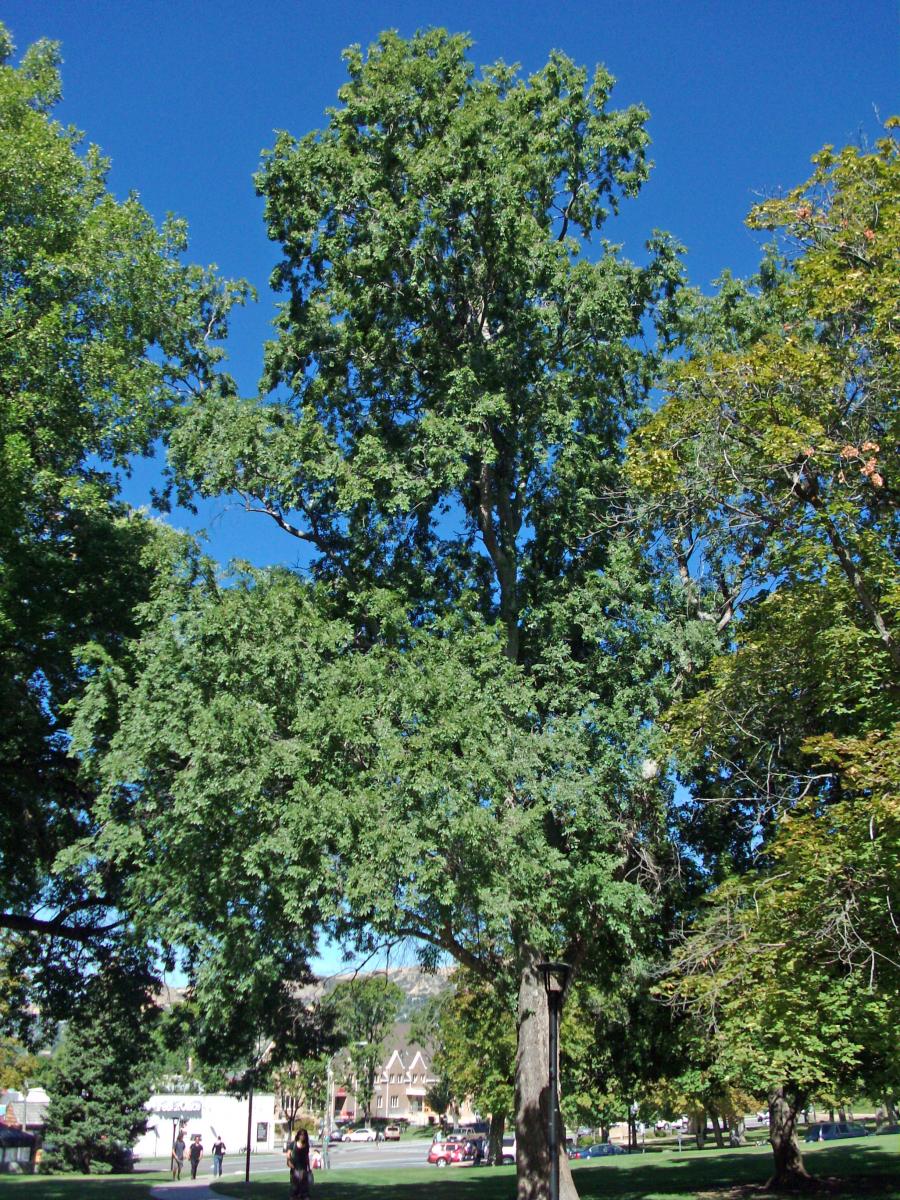
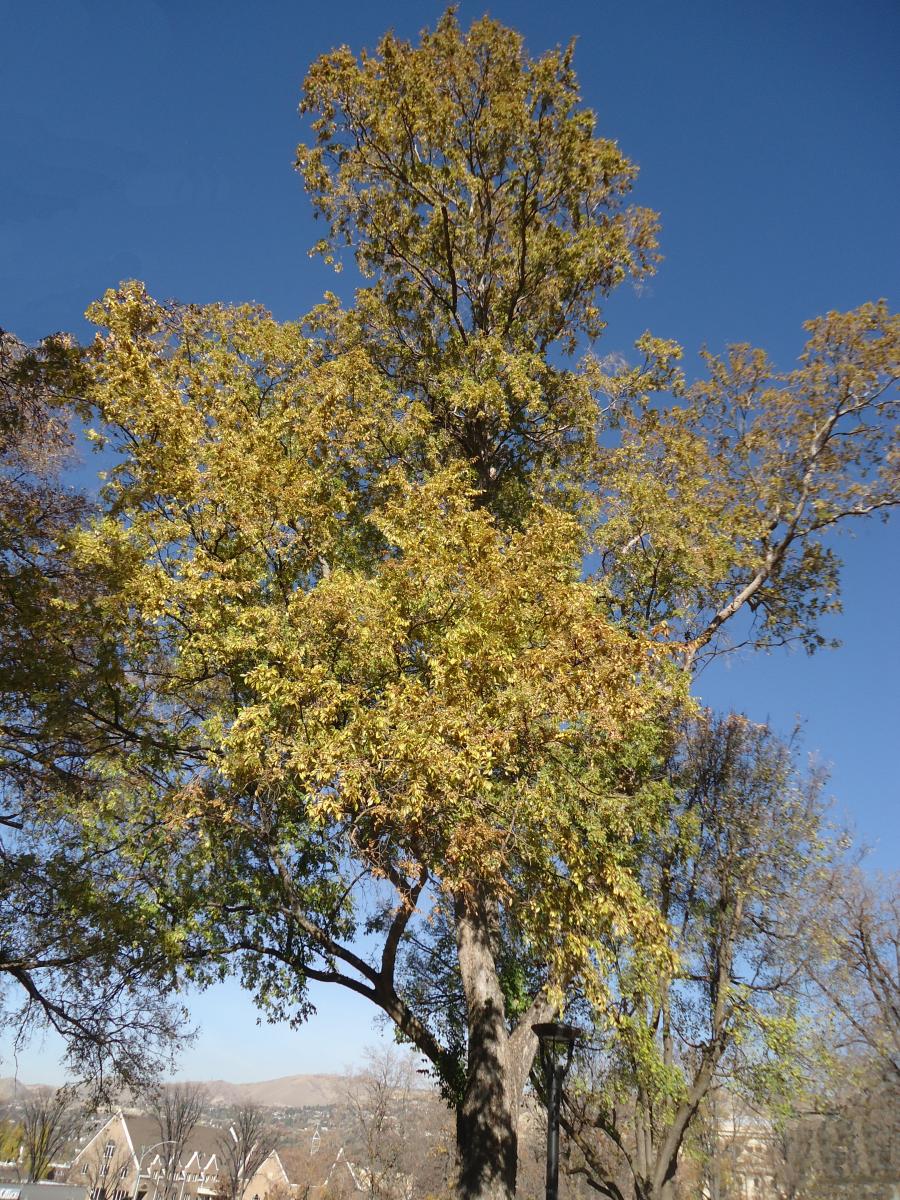
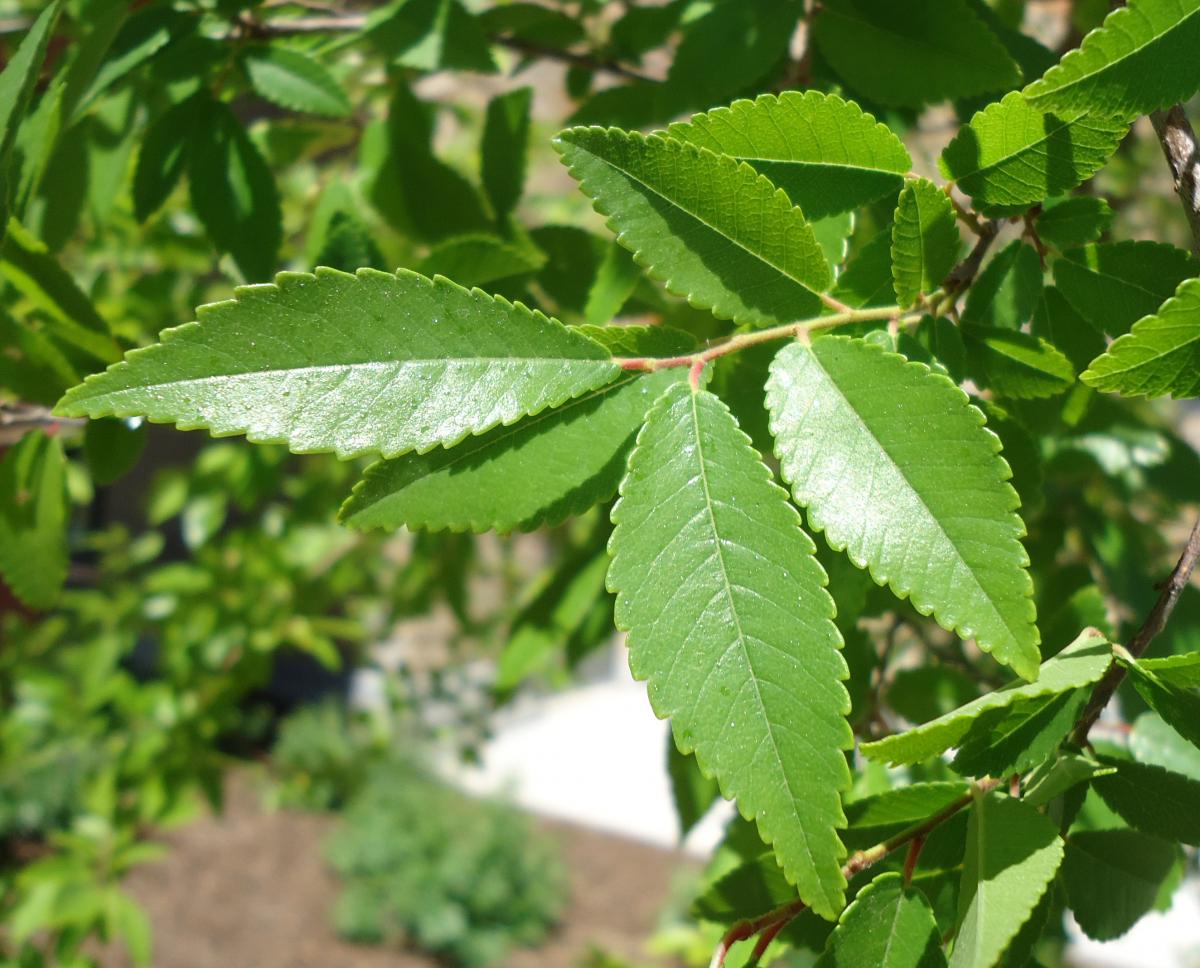

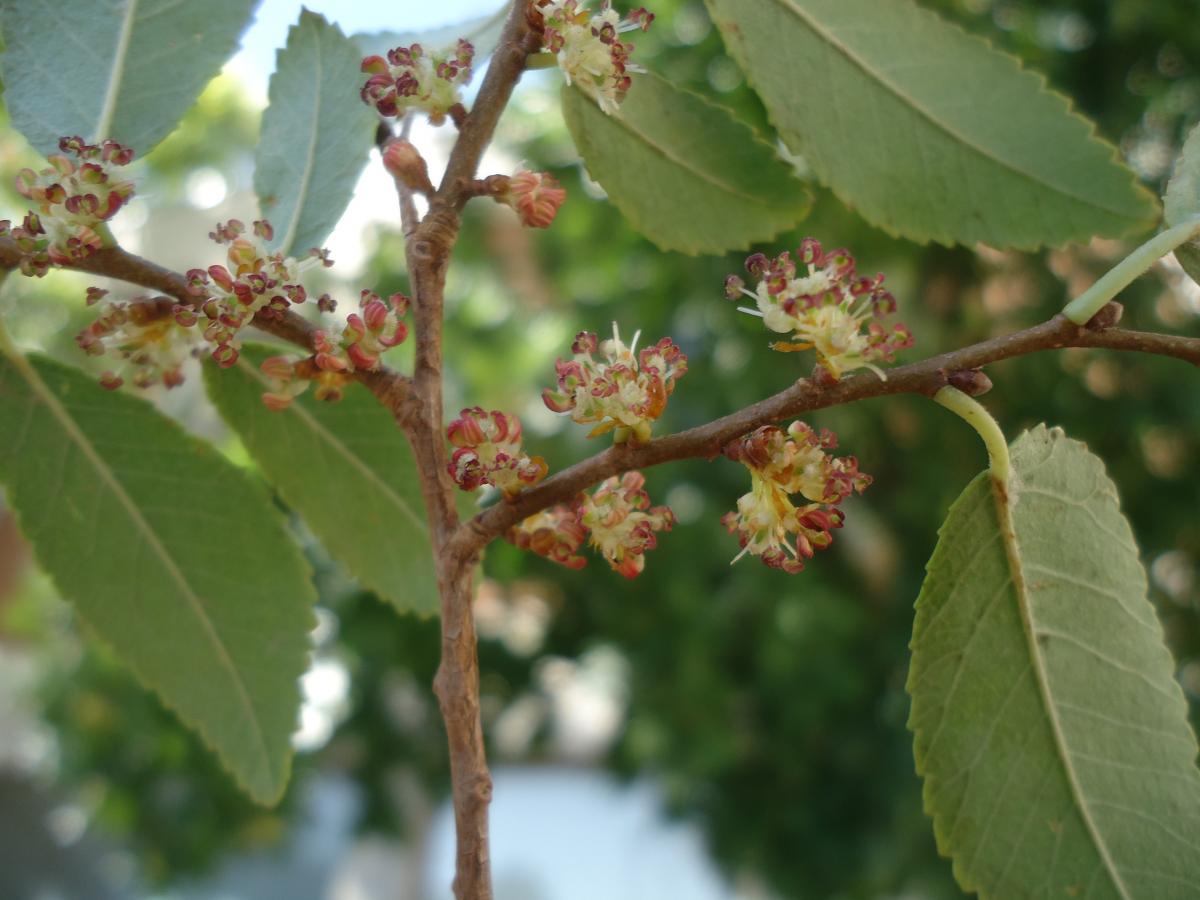
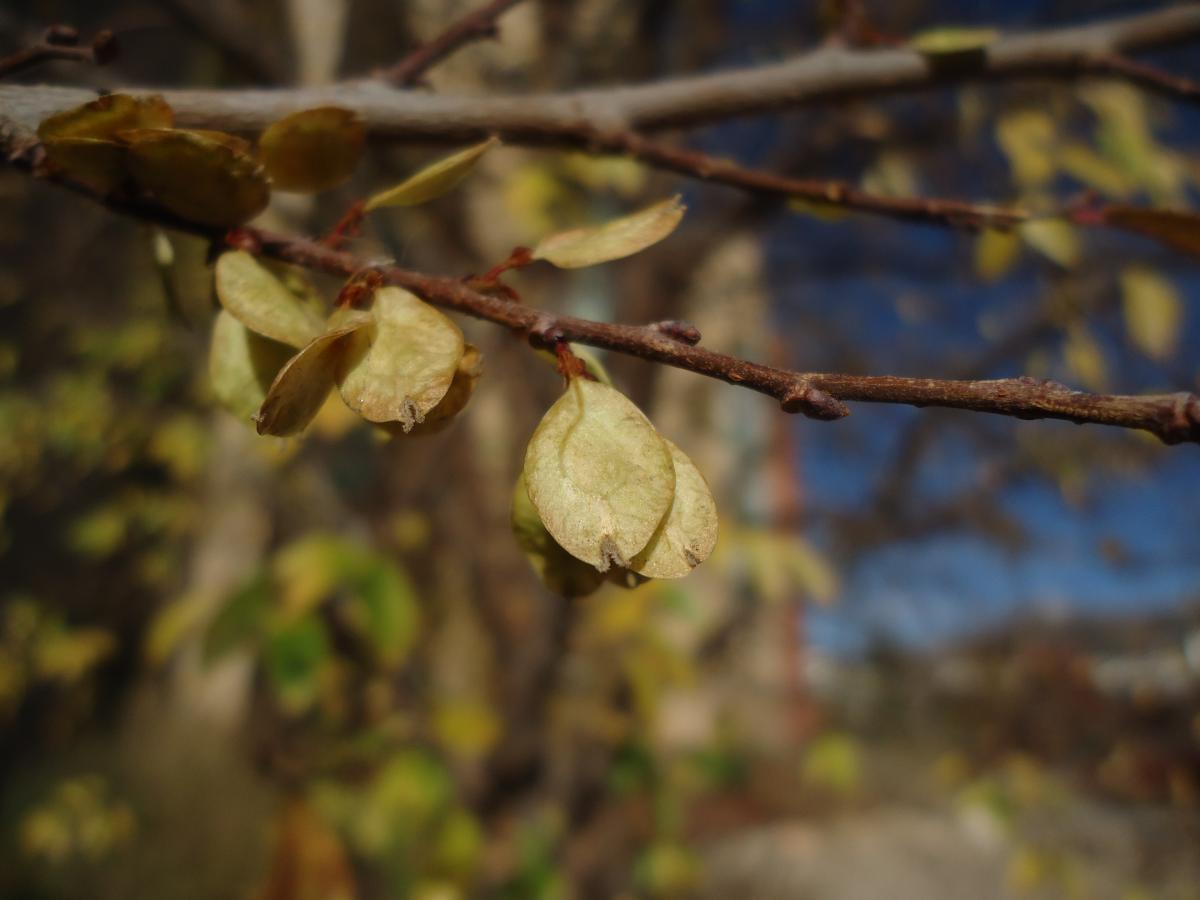
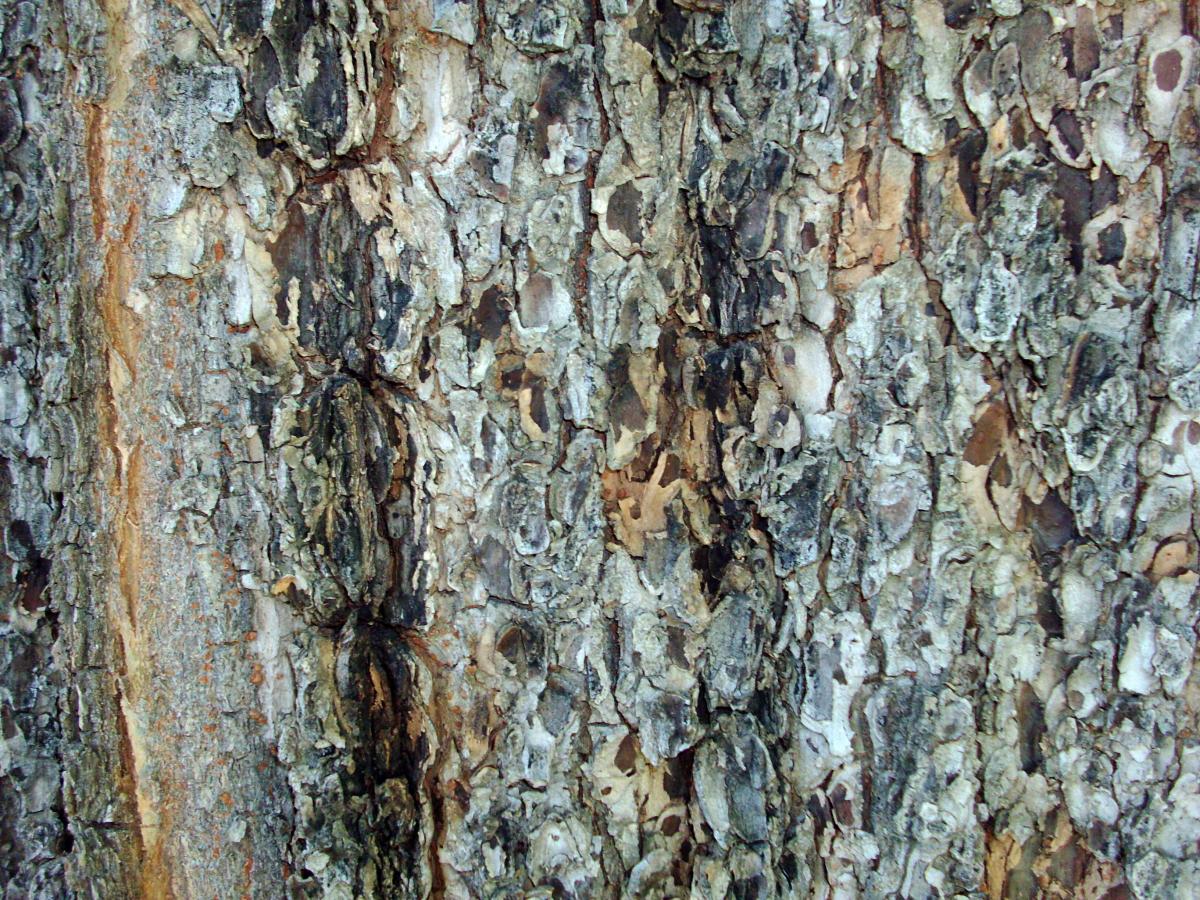
Ulmus parvifolia
Leaves: Deciduous. Leaves are small and narrow 1 to 2½ inches long, ⅓ to 1 inch wide with short, blunt serrations on the leaf edge. Leaf sides do not meet equally across the leaf stem (petiole) at the base. Leaves are medium to dark green in color and somewhat rough or leathery to the touch. Fall color is yellow to reddish to purple.
Bark/Twigs: Mottled, beautiful interlacing bark. Bark exfoliates in irregular patches. Gray-green color with orange and brown.
Flowers/Fruit: Inconspicuous flowers bloom late summer (August to September). Small ⅓ inch seeds are centered in a papery, oval "wing" that looks like a fried egg with a notch in the tip. Seeds (called samaras) ripen in fall.
Mature size and shape: Large. 40 to 50 feet high x 55 feet wide. Graceful, rounded to spreading crown shape with pendulous branchlets.
General information/special features: Plant in full sun to partial shade. Prefers moist, well-drained soil, but is drought tolerant. Widely adaptable to a variety of sites. Excellent urban soil tolerance. Dutch-elm disease resistant.
Landscape use and maintenance: Excellent, tough durable shade tree. Beautiful tree with delicate form, unique bark and year-round interest. Medium to fast growing rate. Average maintenance. Easily transplanted.
USDA Hardiness Zone: 5 to 9
Family/Origin: Ulmaceae – Elm. Native to northern and central China, Korea, and Japan. This is the true Chinese elm and is not the same as a Siberian elm, U. pumila.
Campus Use: Somewhat common. Can be found southeast of Marriott Residential Scholars Community (Bld 112). The tree west of the George Thomas Building (Bld 5) is on the Utah Big Tree Registry.
